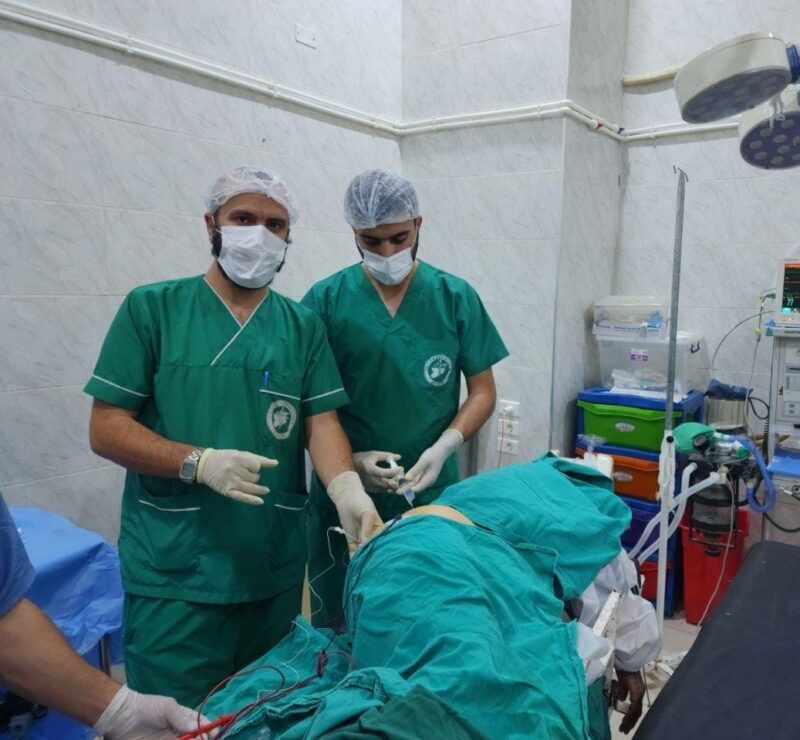Introduction:
A 90-year-old patient visited Bab Al-Hawa Hospital, an accredited training center in anesthesia and intensive care, with the support of the Syrian American Medical Association (SAMS), after suffering a fall that resulted in a fracture between the two rounds of the right thigh. The patient’s advanced age and existing health conditions added more complexity to the anesthesia procedure. However, under the supervision of the specialist doctor Dr . Ahmed Al-Abed, and the skillful management of the resident doctor Dr. Muhammad Eid Al-Hussein, the lumbar and sacral plexus blockade was successfully performed.
History:
As with any medical intervention, a thorough assessment of the elderly patient was performed. The patient was revealed to have previous health problems, including a severe rise in arterial tension with regular use of aspirin. In addition, pathological changes were detected in the electrocardiogram, and the cardiac echo indicated a decrease in heart contractility, with an expulsion fraction (EF) of 38%. This indicates a high risk of anesthesia that requires a thoughtful approach to the development of the anesthesia plan.
The decision to use lumbosacral plexus blockade:
In light of the patient’s medical history and the high-risk factors associated with general anesthesia, the anesthesia team led by Dr. Ahmed Al-Abed, a member of the Scientific Council of Anesthesiology and Intensive Care, decided to choose lumbosacral plexus block. This technique offers many advantages, most notably providing effective and long-lasting analgesia for up to 10 hours. By precisely preventing neurotransmission using a combination of bupivacaine and lidocaine, the patient’s pain has been successfully managed without the complications normally associated with general anesthesia.
Role of the Resident:
Under the supervision of Dr. Ahmed Al-Abd, the resident physician Dr. Mohammed Eid Al-Hussein showed good skill in carrying out lumbar-sacral plexus blockade. Using nerve stimulation via a nerve stimulator, Dr. Al-Hussein accurately determined the optimal injection site for anesthetics. The success of this procedure depends on the resident physician’s careful understanding of anatomy and the ability to apply theoretical knowledge to real-life scenarios.
Reflection:
Thanks to the combined efforts of the anesthesia team, the patient received adequate analgesia during the surgery. The fracture repair continued smoothly without any complications, confirming the success of the lumbosacral plexus blockade. This achievement not only ensured the patient a safe and pain-free surgical experience but also demonstrated the remarkable abilities of the residents when guided and supervised by expert mentors.
Conclusion:
The story of a 90-year-old patient undergoing surgery with the help of a lumbosacral plexus blockade highlights the important role of residents in medical training. Through their dedication and competence, residents demonstrate the transformative power of knowledge and skill in patient care. Through these success stories, we are witnessing the lasting impact of medical education and the bright future it holds for healthcare professionals. We hope to continue strengthening A nurturing environment for aspiring physicians, ensuring a generation of competent medical practitioners.
Reference:
- Anesthesia for orthopedic trauma, Anesthesia for orthopedic trauma – UpToDate
- Trust ASRA Pain Medicine — the gold standard in scientific advisories and guidelines related to anesthesia, analgesia, and acute and chronic pain. Guidelines (asra.com)

